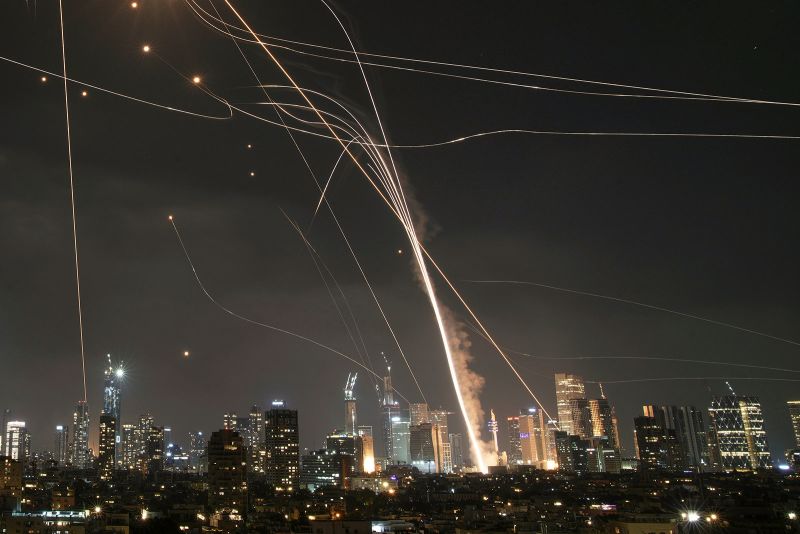One number could define the Iran-Israel conflict’s outcome

The outcome of the defining conflict between Iran and Israel may depend on one simple number, which is at very best a rough estimate.
Israeli military data and expert analysis say Iran has fired about 700 of its medium-range ballistic missiles (MRBM) at Israel over the past 14 months, leaving it with anything between 300 to 1,300 left in its stockpile.
This remaining arsenal is subject to Israel’s fierce air assault of the past five days, with the IDF saying it has targeted at least a third of the surface-to-surface launchers that fire MRBMs, possibly further reducing Iran’s ability to strike back at Israel.
The depletion of its arsenal may compound Iran’s desire to negotiate its way out of the conflict and also intensify the ferocity of the Israeli campaign in the coming days, analysts have said, as Israeli airpower finds itself almost unchallenged and Iran’s nightly assaults on Israeli cities seem recently to have ebbed.
Few reliable estimates for Iran’s stockpile exist, although US CENTCOM’s commander General Kenneth McKenzie said in 2023 that they had more than 3,000 missiles of different ranges. Behnam Ben Taleblu, a senior fellow at the Foundation for the Defense of Democracies, said likely 1,000 to 2,000 of these were medium-range, capable of spanning the 1,400 kilometers between Iran and Israel. He called the estimate “at best a back-of-the-envelope calculation.”
According to the IDF, Iran used 120 MRBMs in its April 13 attack last year on Israel, another 200 on October 1, and a total of 380 in the past five days. This tally would deplete its overall known arsenal by a total of 700. But whether it leaves Tehran with an existential crisis over its missile deterrence depends on both the size of its initial stockpile, and what damage Israel has done to Iran’s military infrastructure, since it began striking across the country on Friday.
Ben Taleblu suggested this might leave Iran with 1,300 MRBMs. Other estimates were more pessimistic. Dr. Eyal Pinko, a retired Israeli naval intelligence officer, now a senior research fellow at the Begin-Sadat Center for Strategic Studies, said: “Taking into consideration that they fired around 400 to 500 in the last four days and Israel destroyed some of the arsenal of what they had, I believe they have now 800 to 700.”
The few glimpses of the damage done to Iran’s air defenses and missile production from Israeli strikes on October 26 have revealed a significant toll. Admiral Tony Radakin, the UK’s Chief of the Defence Staff, said in a December speech that 100 Israeli aircraft had fired as many missiles from as many miles away and “took down nearly the entirety of Iran’s air defense system. It has destroyed Iran’s ability to produce ballistic missiles for a year.”
But recently Israel has amplified the threat that Iran’s missile production poses. Prime Minister Benjamin Netanyahu said on Friday, as Israel launched its air campaign, that Iran had sped up its manufacture of ballistic missiles to 300 a month, which could leave them with 20,000 in six years. He did not provide evidence for the claim.
Pinko said the 2024 strikes had “destroyed the main facilities for manufacturing ballistic missiles motors” in Iran, creating severe limitations to the country’s supply chain. Still, he notes that potential assistance from China in the coming months could boost production again.
Iran would not want its arsenal of MRBMs to sink “below four digits,” said Ben Taleblu.
“For the Islamic Republic, quantity has a quality of its own,” he said, adding that Iran excels “in crisis management but is actually a poor conventional warfighter. And having to expend these ballistic missiles during a time of war, rather than a time of crisis precisely puts it in this bind.”




